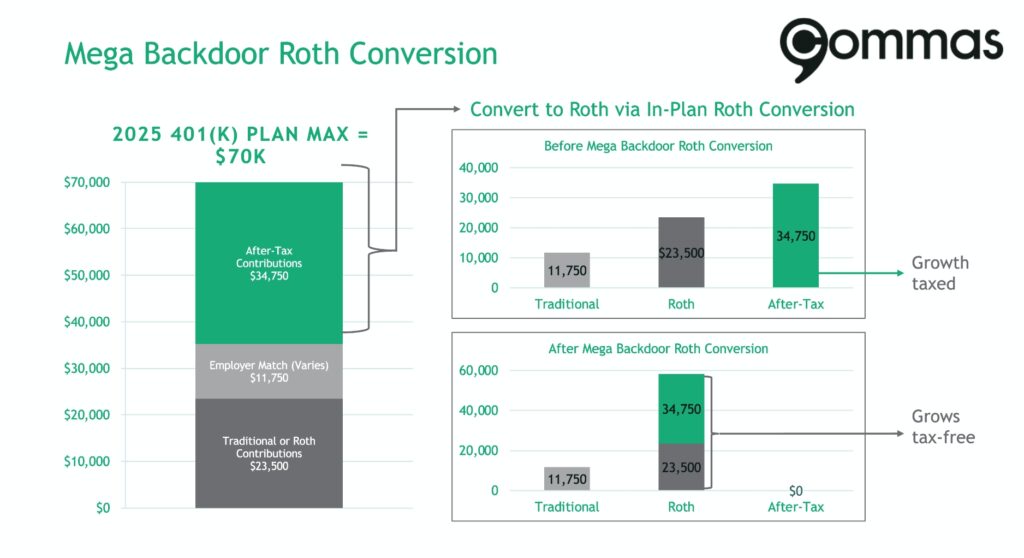One of the most compelling aspects of Google’s compensation packages is the awarding of Restricted Stock Units (RSUs)—or Google Stock Units (GSUs) as employees like to call them. This amazing benefit comes with unique financial planning opportunities, including an asymmetrical vesting schedule, new tax obligations, limited selling windows, and possible enrollment in the Employee Trading Plan (ETP). Here at Commas, we are here to help you understand and navigate your GSUs.
Understanding the GSU Basics
GSUs are a type of equity compensation that gives employees the promise of Alphabet shares (GOOG) at a future date. You can be awarded GSUs at key moments—for example, when you’re hired or with your annual salary increase. These GSUs vest over time, and once they vest, they are yours, like any other stock you purchase. When they are awarded to you, the company indicates what the GSUs are worth at that time, noting that the value may differ upon vesting. This makes them a variable addition to your compensation package, subject to stock volatility.
Historically, Google employees have received two kinds of shares: GOOGL (comes with voting rights, no longer distributed) or GOOG (no voting rights, still distributed). Employees’ vested shares are held in custody at Morgan Stanley. To view or sell your vested shares, sign into the Morgan Stanley portal.
Key RSU Terms
Here are the key terms to understand:
- Grant Agreement: the document that outlines the conditions of your RSUs – number of shares granted, vesting period, etc.
- Grant Date: the date Google awards RSUs to an employee
- Vesting Schedule: timeline over which RSUs become fully owned by the employee
- Vesting Date: the date in which the GOOG shares are distributed into your account
- Fair Market Value: value of the stock at any point in time
For an overview of RSUs and what you need to know, check out our video on RSUs.
Analyzing the GSU Vesting Schedule
GSUs vest over a four-year period, with 25% vesting after the first year and the remaining 75% vesting in equal monthly installments over the following three years. However, the vesting schedule may differ, particularly for new hires or promotional grants. If you stay at the company for four years, you will receive all your GSUs. If you leave prior to that, you will lose those unvested shares.
Tax Implications and Your GSUs
There is no tax impact when you are granted new GSUs. The tax implications come when they vest, as well as when you sell the shares.
Once GSUs vest, they are taxed as ordinary income. Morgan Stanley will automatically withhold 22% of your vesting amount to cover your tax bill—like tax withholding from your paycheck. When you surpass $1M in supplemental income in a calendar year, withholding is readjusted to a 37% withholding rate. Withholding is covered by selling a portion of your shares. Many employees, especially those subject to the 22% withholding rate, often find that the automatically withheld amount is not enough to cover their full tax bill, so it is helpful to monitor your tax obligations.
If you hold onto your GSUs beyond the vesting date, your GSUs will be subject to capital gains taxation. The fair market value of the stock when they vest is the cost basis for these shares, and the sale price will determine your capital gain or loss, like with a typical stock sale. If you hold the shares for less than 1 year, those gains or losses will be treated as ordinary income. If you hold them for over 1 year, they will be taxed at capital gains rates.
The information shown below offers current tax rates for 2025.
Google’s Trading Windows and the Employee Trading Plan (ETP)
It’s important to note that you cannot sell GSUs at any time. Instead, there are trading windows that will open for you, depending on your level and type of shares. This is designed to help prevent insider trading, similar to how a 10b5-1 plan works.
To get around this, Google offers an optional Employee Trading Plan (ETP) that allows employees to sell a predetermined amount of GSUs throughout the year, regardless of trading windows.

The main benefit of the ETP is that GSUs will automatically sell on their vesting date, taking the burden of deciding when to sell out of your hands. Additionally, the other benefits of enrolling in the ETP include:
- Creates more predictable cash flow
- Provides a more systematic approach to diversification through the enforced selling
- Offers discipline and rational decision making rather than market timing
Some potential drawbacks of the ETP:
- Lack of flexibility and control with selling GSUs – if you are enrolled in the ETP, you cannot sell any GOOG or GOOGL shares outside the plan or modify the automated trading schedule
Ultimately, enrolling in the ETP is something you need to consider in the context of your larger financial plan and your ability to abide by the plan’s parameters. If you do not enroll in the ETP, you can sell your Google stock during open trading windows (unless you have material, nonpublic information about Alphabet).
GSUs can provide excellent opportunities to build wealth for Google employees. As illustrated in this guide, there are many factors to consider, especially when it comes to tax implications and trading windows. Our team is well-versed in helping Google employees find the best path forward to meet goals that fulfill short and long-term financial needs.










